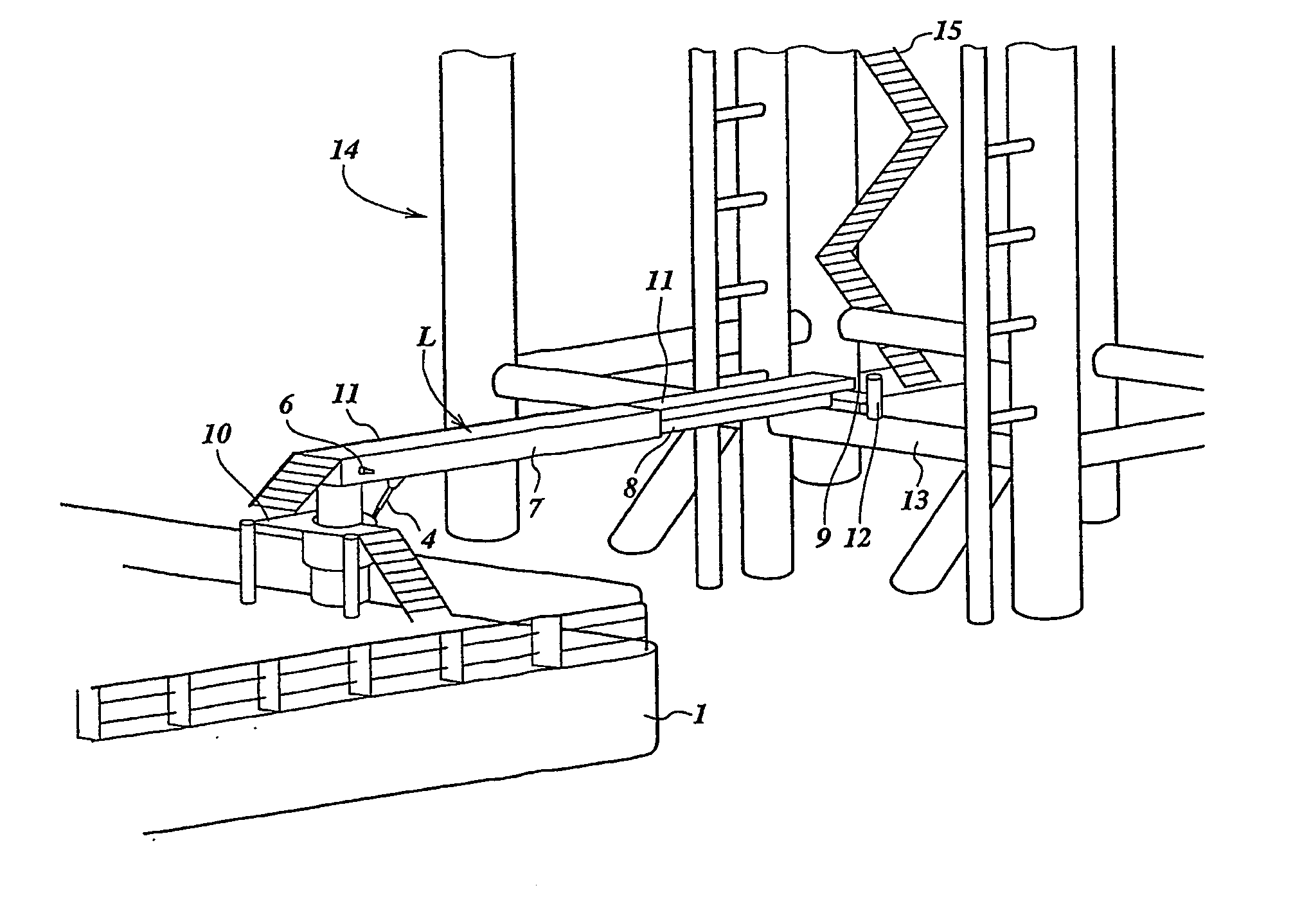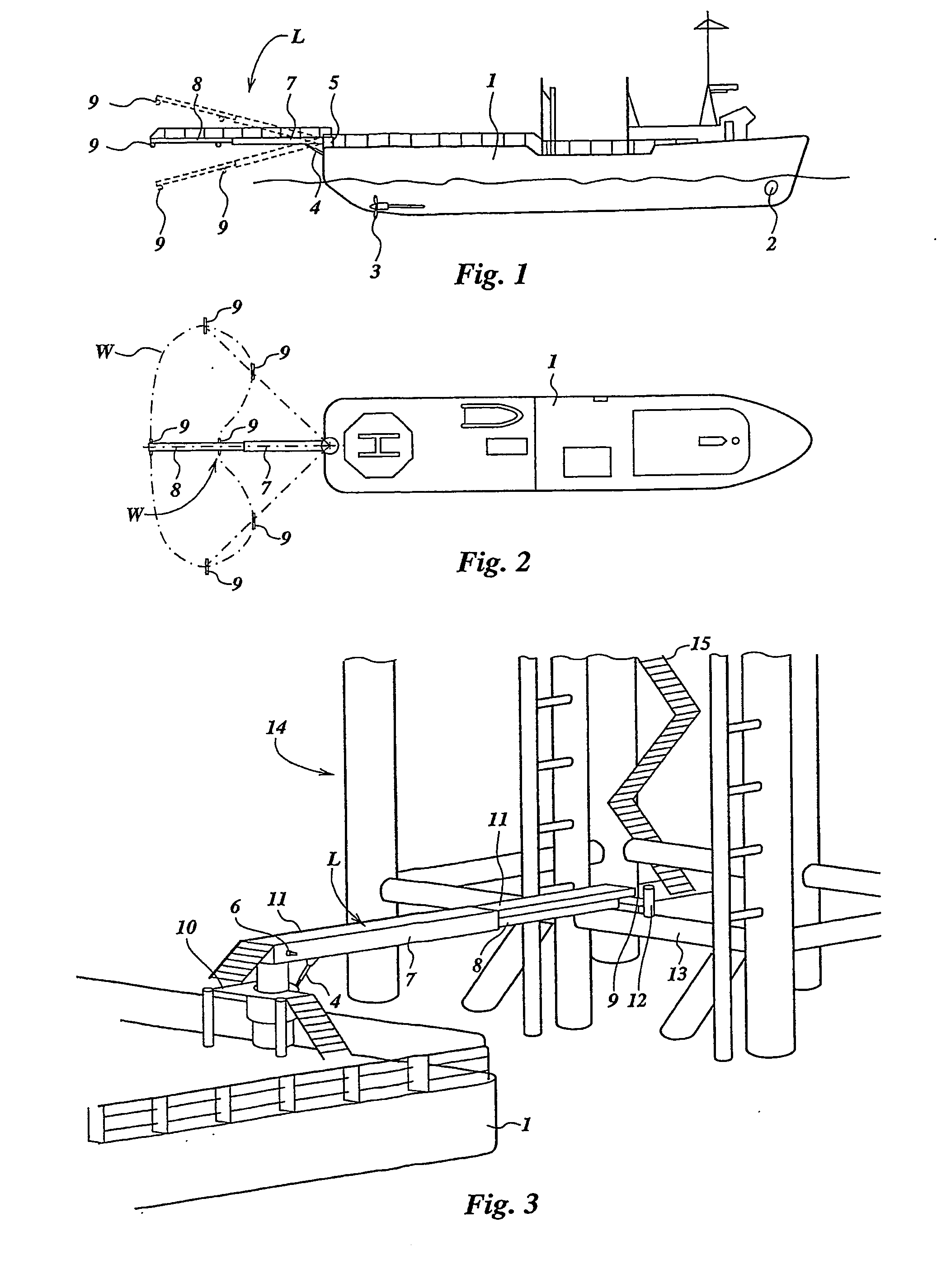Device and Method for Coupling a Vessel to a Stationary Object
a technology for coupling devices and objects, applied in transportation and packaging, bridges, passenger handling devices, etc., can solve problems such as difficult placement of coupling elements around pipes, and achieve the effect of preventing or limited damage to devices
- Summary
- Abstract
- Description
- Claims
- Application Information
AI Technical Summary
Benefits of technology
Problems solved by technology
Method used
Image
Examples
Embodiment Construction
[0029]FIGS. 1 and 2 show a vessel 1 with a propulsion system consisting of, inter alia, propellers 3 and a bow thruster 2. A pivot point 5, to which a gangplank L is attached, is provided on the stem of the vessel 1, which gangplank has a first gangplank part 7 and a second gangplank part 8 which telescopes into said first gangplank part. The first gangplank part 7 is attached to the pivot point 5 by means of a pivot pin 6 and can be moved in the vertical plane by a lifting cylinder 4. By means of a drive (not shown) the gangplank L can rotate about a vertical axis of the pivot point 5, with the result that the gangplank L can be laid on the afterdeck of the vessel 1 during transport. During use the gangplank L is moved to a position behind the vessel 1.
[0030]The end of the second gangplank part 8 is provided, in a manner to be indicated below, with coupling means K, by means of which the gangplank L can be coupled to a coupling pipe 9, which forms part of a stationary object 14 pla...
PUM
 Login to View More
Login to View More Abstract
Description
Claims
Application Information
 Login to View More
Login to View More - R&D
- Intellectual Property
- Life Sciences
- Materials
- Tech Scout
- Unparalleled Data Quality
- Higher Quality Content
- 60% Fewer Hallucinations
Browse by: Latest US Patents, China's latest patents, Technical Efficacy Thesaurus, Application Domain, Technology Topic, Popular Technical Reports.
© 2025 PatSnap. All rights reserved.Legal|Privacy policy|Modern Slavery Act Transparency Statement|Sitemap|About US| Contact US: help@patsnap.com



